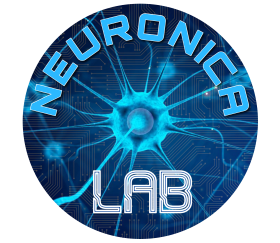An Italy-Israel joint-research program in partnership with University of Turin and Tel-Aviv University, funded by Italian Ministry of Foreign Affairs and International Cooperation (MAECI).
GOAL: Ensuring health and well-being for all and for everybody
Brugada syndrome (BrS) is the most prevalent inherited arrhythmia disorder (channelopathy), mainly due to mutations in sodium ion channels, characterized by propensity to develop life-threatening ventricular arrhythmias in young and otherwise healthy individuals. Even though there has been an amazing progress in unravelling the genetic basis and in clinical management during the last decades, there are still major clinical questions opened. Among them, an important one is the difficulty in correctly assessing arrhythmic risk during the initial contacts with patients. It is well known that, even among patients sharing the same disease-causing mutation, the clinical manifestations may range from no symptoms at all to repeated cardiac arrests and sudden death (SD). Our project focuses on the possibility that the oldest cardiological instrument, the electrocardiogram (ECG), may contain hidden information, invisible even to the most experienced human eye. We believe it could be captured by an artificial intelligence (AI)-enhanced analysis of the ECG in patients with BrS. In particular, deep neural networks (DNNs) will be employed for refining risk stratification, particularly in asymptomatic patients, who often constitutes a “grey-zone”, where misclassification of patient-specific arrhythmic propensity may result in premature death. An unprecedented amount of ECGs (both digital and paper-based) and clinical data of patients affected by this syndrome will be collected, after appropriate digital conversion in case of paper-based ECG traces. This database will be used to train different DNN models to provide patient-specific predictions about the occurrence of a life-threatening arrhythmia, using three complementary approaches (Single-ECG: one ECG for each patient; Multi-ECG: multiple ECGs for each patient; Dynamic-ECG: multiple-ECGs for each patient accounting for their evolution over time). At the same time, it will be analysed using directional wavelet packets for extracting novel meaningful features from ECG images, because the transform coefficients have a clear (explainable) physical meaning; they can operate in real time and need small number of images to learn from. The models will be validated using K-fold cross-validation and performance will be tested using state-of-the-art classification metrics (e.g. F-score). This process will lead to a GUI, which will enable cardiologists to input ECGs and clinical data to obtain patient-specific risk estimation based on AI-enhanced ECG analysis. The two groups complement each other to generate a coherent research group on health applications of AI. The Italian group brings substantial medical experience on cardiac ion channel disorders. They bring ECG collection and build an AI model based on deep learning approach for risk prediction. The Israeli group builds a new CNN-based architecture that uses new directional filters that capture in any resolution the major activities in the image such as edges or oscillations. The new modified CNN will process the ECG images provided by the Italian group and the quality of the outputs will be evaluated by their cardiologist team. In this sense, the combination of two different approaches to machine learning and the mutual exchange of expertise between the Italian and Israeli groups will pave the way to unprecedented discovers about the BrS syndrome.
KEYWORDS: Cardiovascular diseases, Medical engineering and technology, Machine learning, statistical data processing and applications using signal processing
